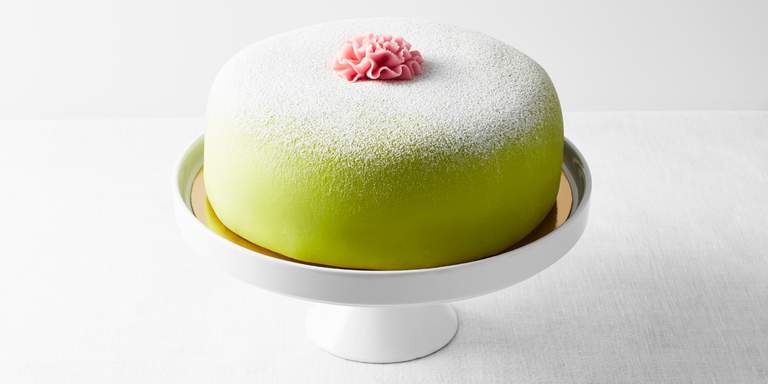A fika evergreen – the Princess cake
Publish date: 6 March 2025
A timeless classic with a royal heritage and a deliciously indulgent dessert, the distinctively green princess cake is not only one of the most popular pastries in Sweden but also a Stockholm invention.
Three layers of cake overlapped with vanilla cream and raspberry jam topped with a hefty layer of whipped cream, all covered by a thin layer of emerald green marzipan, some powdered sugar, and a marzipan rose. If this doesn’t ring any bells it’s because you’ve yet to visit a Swedish café and stand face to face with the Princess cake (or Prinsesstårta in Swedish), a staple of Swedish fika tables.
Matters of taste might vary, of course. But you’d be hard-pressed to find a Swede who hasn’t at least tasted the Princess cake. Approximately a half-million of the beloved pastry are sold annually, which makes it the best-selling cake in Sweden by a wide margin.
Not only is it common on birthdays but also as a dessert on festive occasions. It’s also ubiquitous in offices and workplaces. Just finished a big project or a monumental task? Celebrate with coffee and a princess cake. Want to welcome a new co-worker? Make them feel at home with a coffee and a princess cake. Is one of your colleagues quitting or retiring? Buy them a nice present and some flowers, and say your goodbyes... over a coffee and a princess cake.
"We’ve noticed a renaissance for the classic cakes these last couple of years", says Johan Sandelin-Järnåsen, pâtissier at Vetekatten in Stockholm. "The Princess makes up about 40 percent of our cake sales, and 30 percent of all pastry sales".
Unlike the Napoleon cake (a Swedish variant of a French Mille-feuille) which has no connection to its namesake, the Princess cake has royal roots. The first recipe was conceived by food writer and cooking instructor Jenny Åkerstam, and was published in her 1929 book “The Princesses’ Cookbook” simply as “green cake”. The book was named after three of her royal students; Märtha, Margaretha, and Astrid, daughters of Swedish Prince Carl and Danish princess Ingeborg. Supposedly, the green cake was the young princesses’ favorite and has since been called Princess Cake.
Ingredients have changed over time as well, which has become a major point of contention amongst Princess cake purists. The standard marzipan sheet, for instance, is a tweak of Åkerstam’s recipe. The original cake was instead covered by a layer of green-dyed almond icing. And neither jam nor fresh berries were present.
Then there’s the fact that the green color of the marzipan is of paramount importance. A yellow or pink cake, although virtually the same, is instead called a Carl Gustaf cake or an Opera cake. The secret to Vetekatten’s Princess cake is more basic than that, according to Johan Sandelin-Järnåsen: Fresh cream, a freshly baked sponge, and a batch of newly rolled marzipan.
"Interpreting a princess cake is much like interpreting a semla. At the end of the day, it’s the customer's decision if it’s a worthy cake or not".
Another topic that easily turns toxic is the question of who should get the decorative marzipan rose. A birthday child might seem like the obvious person, but the choice isn’t always as clear-cut. Just grabbing the rose for yourself without asking is seriously frowned upon. But Johan Sandelin-Järnåsen has an easy way out of unnecessary conflicts.
"Well, as an adult I’ve learned that keeping the kids happy makes life easier. So my answer would be to let the kids have the rose. Besides, we sell additional roses, should you need them".
